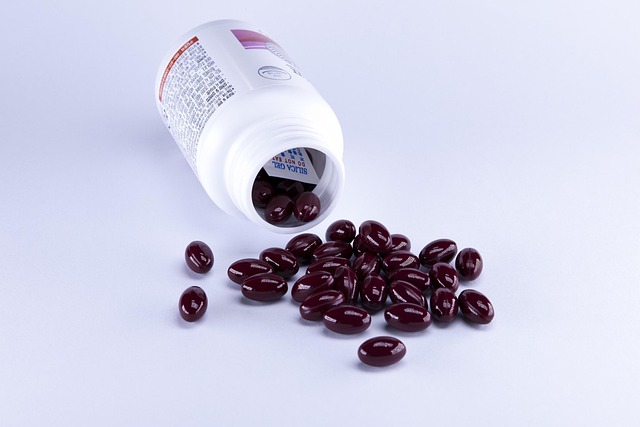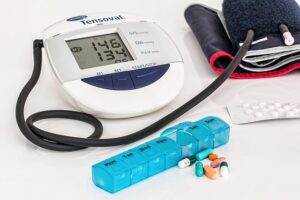Post-traumatic stress disorder (PTSD) is a severe mental health condition arising from traumatic experiences, characterized by flashbacks, avoidance behaviors, heightened arousal, and negative thoughts due to biochemical and neural changes in the brain. Untreated, it leads to daily functioning challenges and intrusive memories. Evidence-based therapies like Cognitive Processing Therapy (CPT) and Eye Movement Desensitization and Reprocessing (EMDR) empower individuals with coping strategies, enabling them to regain control and foster resilience through safe, guided therapy sessions combining CBT, mindfulness, and other techniques. A supportive therapy environment, individual or group therapy, and lifestyle changes including exercise, mindfulness, and diet are vital for sustained healing, with structured assessments tracking progress and celebrating milestones to reinforce positive behaviors.
Trauma recovery therapy sessions play a pivotal role in helping individuals navigate and overcome post-traumatic stress disorder (PTSD). This article delves into the comprehensive process of healing, offering insights on understanding PTSD, its impact, and effective treatment strategies. We explore common therapy techniques, emphasizing the creation of safe spaces for vulnerable clients. Additionally, we discuss the benefits of individual and group therapies, highlight lifestyle integration for long-term recovery, and provide guidance on measuring progress in PTSD treatment. Discover practical steps towards a healing journey with these insightful strategies for PTSD treatment.
Understanding PTSD and Its Impact on Individuals

Post-traumatic stress disorder (PTSD) is a complex mental health condition that can significantly impact individuals who have experienced or witnessed traumatic events. It’s a common yet severe consequence of living through situations like military combat, accidents, natural disasters, assault, or any other life-threatening incidents. The brain’s response to trauma involves a cascade of biochemical and neural changes, leading to symptoms such as reliving the event (flashbacks), avoidance of reminders, heightened arousal, and negative thoughts and feelings.
Without proper PTSD treatment, individuals may struggle with day-to-day functioning, experiencing intense emotions, physical sensations, and intrusive memories that disrupt their lives. Trauma recovery therapy sessions play a pivotal role in helping people process these traumatic experiences, manage symptoms, and regain control over their lives. Through various evidence-based therapies, like cognitive processing therapy or eye movement desensitization and reprocessing (EMDR), individuals can learn coping strategies to navigate their trauma’s impact and foster resilience.
The Role of Trauma Recovery Therapy in Healing

Trauma recovery therapy plays a pivotal role in healing individuals affected by traumatic events, particularly those suffering from Post-Traumatic Stress Disorder (PTSD). This form of psychotherapy is designed to help clients process and overcome the profound emotional and psychological impacts of trauma. Through structured sessions, therapists create a safe space for individuals to confront and express their experiences, emotions, and memories related to the traumatic event(s).
The therapy facilitates a gradual exposure to distressing memories, enabling individuals to develop coping mechanisms and reduce the intensity of associated symptoms. By integrating various therapeutic approaches, such as cognitive-behavioral therapy (CBT), eye movement desensitization and reprocessing (EMDR), or trauma-focused mindfulness practices, therapists empower clients to gain insights, challenge unhelpful beliefs, and rebuild their sense of safety and well-being. This holistic process aids in resilienza, fostering a deeper understanding of oneself and one’s experiences.
Common Techniques Used in PTSD Treatment Sessions

In PTSD treatment sessions, therapists employ a variety of evidence-based techniques tailored to help individuals process and overcome traumatic memories. One common approach is cognitive processing therapy (CPT), which assists clients in identifying and challenging negative thoughts associated with their trauma. This involves helping them reframe unhelpful beliefs about the event and themselves, fostering a more adaptive perspective.
Another popular method is eye movement desensitization and reprocessing (EMDR). EMDR combines exposure therapy with guided eye movements to help patients process traumatic memories. By focusing on specific aspects of the trauma while engaging in bilateral stimulation—such as side-to-side eye movements, taps, or tones—clients can reduce the intensity of associated emotions and distressing thoughts. This allows for a gradual reprocessing of the traumatic memory, leading to greater resilience and emotional healing.
Creating a Safe and Supportive Therapy Environment

Creating a safe and supportive therapy environment is paramount for effective PTSD treatment. This begins with establishing trust between the therapist and client, fostering a non-judgmental space where individuals feel heard and respected. The setting should be free from external distractions, allowing for deep introspection and emotional processing. A calm, comfortable atmosphere, often achieved through careful selection of decor and lighting, can significantly impact a client’s willingness to open up about traumatic experiences.
Additionally, incorporating techniques like active listening, empathy, and validation ensures that the therapy space is emotionally secure. Therapists should be attuned to clients’ needs, providing reassurance and encouragement throughout sessions. This supportive environment encourages individuals to confront and process their trauma at their own pace, laying the groundwork for healing and recovery in PTSD treatment.
Individual vs Group Therapy for PTSD Recovery

When it comes to treating Post-Traumatic Stress Disorder (PTSD), both individual and group therapy offer effective paths to recovery. Individual therapy provides a personalized approach, allowing clients to explore their traumatic experiences in a safe, one-on-one setting with a trained therapist. This format is ideal for those who prefer more intimate sessions or have specific needs that require tailored strategies.
Group therapy, on the other hand, offers a supportive community where individuals share their journeys and learn from one another. It can be particularly beneficial for building social connections and gaining different perspectives on coping mechanisms. In a group setting, clients may feel less isolated as they collectively navigate the challenges of PTSD recovery. This collaborative environment encourages open dialogue, fostering a sense of belonging and understanding among participants.
Integrating Lifestyle Changes for Sustained Healing

In trauma recovery, integrating lifestyle changes is crucial for sustained healing in PTSD treatment. It involves adopting habits that promote mental and physical well-being, such as regular exercise, mindfulness practices, and a balanced diet. Engaging in consistent physical activity helps reduce stress levels, improves mood, and enhances overall resilience. Mindfulness techniques allow individuals to stay present, manage flashbacks and nightmares effectively, and cultivate a sense of calm. Additionally, eating nutritious meals supports brain health and emotional regulation.
These lifestyle changes work synergistically with therapy sessions to reinforce coping mechanisms and build a supportive routine. By embracing these habits, individuals can foster a deeper connection with their bodies, minds, and emotions, laying the foundation for long-term recovery from PTSD.
Measuring Progress and Celebrating Milestones in Treatment

Measuring progress and celebrating milestones are essential components of trauma recovery therapy sessions, particularly for those undergoing PTSD treatment. It provides a sense of accomplishment and allows individuals to recognize their healing journey. Therapists often use structured assessment tools to gauge improvements in symptoms, emotional regulation, and overall functioning. These tools help track changes over time, ensuring the treatment plan remains effective and tailored to the client’s needs.
Celebrating milestones can take various forms, from acknowledging small victories in therapy sessions to organizing special events that mark significant progress. Recognizing these achievements reinforces positive behaviors and motivation. It also fosters a growth mindset, encouraging individuals to view challenges as opportunities for learning and development rather than roadblocks to recovery.
